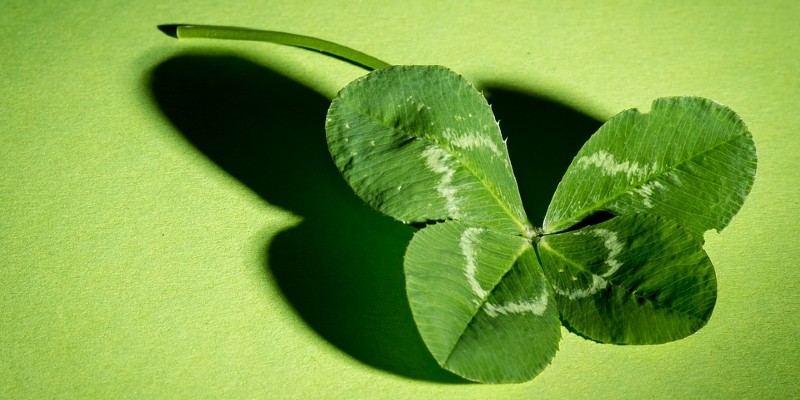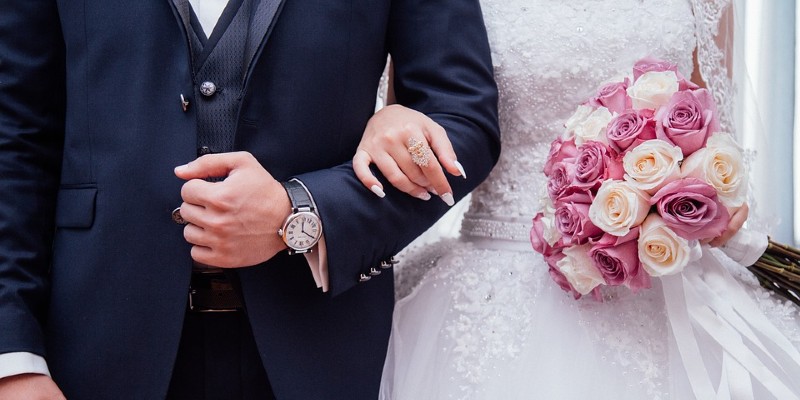Looking for Online Casino Luck?

A lot of us are looking for luck, especially as we head into the new year. Whether you want your team to win a big game, want to meet someone new or you’re hoping for a big break in the online casino, you might have thought about good luck charms. Every culture has its own signs of good and bad fortune, which often have an interesting back story. What’s lucky in one culture might even be unlucky in another.
We’ve rounded up some of the most intriguing charms and superstitions from New Zealand and around the world so you can see how your luck stacks up. Check out these talismans and omens that could some people say may sway your fortune for the new year. If you want a chance at starting off the year with a win, why not try out JackpotCity, the best online casino in NZ, and see how your luck treats you?
Where Do Superstitions Come From?
Even if you don’t think you’re particularly superstitious, chances are you unconsciously—or unknowingly—do at least a few superstitious things sometimes. Even the tradition of giving a toast on New Year’s and then kissing your partner is a superstition. It’s thought to scare off evil that might affect you in the new year.
Most superstitions are deeply rooted in our culture, so we don’t often think about where they come from. It might be something you saw your parents do, or something you learned as a kid, like not stepping on cracks in the sidewalk. Other superstitions are just the result of basic psychology—if we do something once and the outcome is good, we’re more likely to do it again. If something bad happens, we might try to avoid repeating the action.
Even if you don’t believe in good luck signs or bad omens, you may still follow some of the “rules” of superstitions. For example, most people won’t open an umbrella indoors because it’s thought to be bad luck. The same goes for knocking on wood whenever you’ve said something you hope will happen—this one is common enough that it’s become a widely used expression.
There are other symbols that are so commonly thought of as being good or bad luck that we don’t really think about where they came from—like being careful about breaking mirrors, avoiding a black cat or throwing spilled salt over your shoulder. The idea of four-leaf clovers being lucky, of course, comes from Ireland, where these uncommon plants are associated with leprechauns and gold.
Similarly, many people have a superstition about the number 13, and particularly Friday the 13th. This is thought to come from the Middle Ages, related to Good Friday and Jesus’ last supper—where there were 13 people present. This could also be the reason why many people choose not to sit in the 13th row of airplanes, or why some high-rise buildings lack a 13th floor. Believing that the number is bad luck is common enough that a phobia of number 13 has its own name—triskaidekaphobia.
Superstitious gamblers may always play the same numbers or go to the same dealer or pokie machine at an on-land casino. Whether you believe the hype around luck or not, superstitions are an interesting part of most cultures. Some come from practical wisdom, while others come from ancient cultures or old wives’ tales.
If you think you have a lucky charm, you can try it out at the best online casino in New Zealand—when you play our pokies, table games and more. Or, if you’re having an unlucky day, see if you can turn it around with a win!
1. Sailors Take Warning

Some of the most famous superstitions from around the world come from sailors. It could be because they had a lot of time to sit around on the boat and think about their fortune, but it may also be because of how dangerous the sea-faring life once was. Tiny changes in the wind and weather could change the fate of the crew, so it’s no surprise that they were careful about superstitions.
Probably the most famous sailor’s superstition is “Red sky at night, sailors delight; red sky in the morning, sailors take warning,” which is based on the colours of sunrise and sunset. This one has a bit of truth to it sometimes, since the colour of the sunrise or sunset is determined by how clear the skies are.
Many sailor’s superstitions centre around women—particularly the beautiful and dangerous sirens of the sea. This comes from Greek and Roman mythology and from Homer’s Odyssey. It’s also the reason why many ships have nude siren busts on the bow (women weren’t thought to be unlucky if they were undressed!). It was also bad luck to have women on board old ships…but mostly because they were afraid they’d be a distraction from safe sailing.
Another sailor’s warning was to watch out for red heads—who were thought to be dangerous. If one had to talk to a red head, particularly before boarding the boat for a voyage, it was less unlucky to be the person who started the conversation.
One modern-day boating superstition comes from New Zealand yachtsman Sir Peter James Blake. He won several big-name races including the 1989-1990 Whitebread Round the World Race and set an around-the-world sailing record aboard the ENZA New Zealand. He attributed his lucky to a pair of red socks knit for him by his wife. Unfortunately, Blake’s luck took a turn in 2001, when his boat was attacked by pirates and he was killed. Many of his fans wore his signature red socks as a sign of mourning.
2. Marsh Crakes and Other Birds

In New Zealand, there’s a superstition that says hearing a marsh crake over your right shoulder will bring good luck. But, if you hear it over your left shoulder, you’ll have bad luck instead. This superstition, like many old beliefs in our country, comes from the Māori, the aboriginal people of New Zealand. They believed that marsh crakes were able to tell the future, and depending on where you heard one, it was a sign about your upcoming fortune. You can hear what they sound like here…and then keep your eyes and ears open next time you’re in nature for some hints about your luck.
The Māori also believed that seeing a karoro, or black-backed gull, inland was bad luck. These gulls are common near the seaside but seeing one far away from the water was a sign that bad fortune was coming your way. However, some people used to keep them as pets, because they were good at controlling other pests in the garden.
The New Zealand thrush, or laughing tiutiu, was a bird whose call sounded like an evil laugh. Because of this, they were considered bad luck when you saw or heard them. However, the birds are now extinct—so while it’s unfortunate for the species, it may relieve some superstitious Kiwis to know they’re no longer around to bring bad fortune.
All around the world, owls are considered a powerful symbol. They’re considered wise creatures but can also give some people a sense of foreboding. For the Māori, they were a sign of grief and awareness, which could be considered a sign of bad luck. One type of owl in particular, the now-extinct Whēkau, was believed to be a sign of bad fortune because of its creepy laugh-like call and tendency to eat other animals’ entrails.
Not all birds are bad luck for superstitious folks. Doves and pigeons are considered a symbol of luck in love, because they mate for life. Storks are also a common symbol of good luck in families, because of their association with carrying human new-borns in their beaks. Hummingbirds, some of the tiniest and fastest birds in the world, are usually seen as a good omen, promising success and good fortune. The same goes for peacocks. These flashy birds are considered a symbol of wealth because of their associations with royalty and opulence, though some people believe that seeing a peacock feather that the bird has shed is bad luck.
3. Māori Symbols
The Māori are well known for their beautiful designs, particularly in pendants made of bone and greenstone. These pendants aren’t just for decoration, though—they’re also meant to represent good luck and safe travels, particularly by sea.
The most popular Māori design is the hei matau, a carving that looks like a fancy fish hook. Legend has it that a lucky mariner named Maui once caught a huge fish using nothing but a line and his grandmother’s jawbone. The huge fish was caught in Hawkes Bay, which has a similar shape to the hei matau. Based on this, the hook became a symbol of good fortune in all aspects of life, but particularly success and fertility, as well as safe travels. And, since fish were such an important part of the cuisine, having good luck at sea was also a sign of plenty.
Carvings of the fishhook symbol are commonly carved from natural materials like bone, ivory, shells or wood. The most beautiful and cherished ones are made from pounamu, or greenstone, which is a highly valuable stone made often composed of nephrite jade or bowenite. This material is naturally occurring in the southwest coast of New Zealand, and is still used for crafts today, including pendants, statues and more. Because of how durable it is, anything made from greenstone is considered lucky and thought to be a sign of longevity.
Hei matau pendants are worn by Māori people as well as many other New Zealanders. They’re seen both as a symbol of the country’s heritage and a sign of good fortune. They’re also common as souvenirs for tourists because of their rich history and beautiful appearance.
The hei matau is not the only commonly used ancient symbol in Māori jewellery. You can also find the Koru, or spiral, symbol which symbolizes birth, since it looks like an unfurling fern. There are also beautiful twists that symbolize the joining together of two people or cultures for eternity. These intricate designs are also carved out of a single piece bone or greenstone, requiring countless hours of careful craftsmanship to make the final work.
Another common Mairi symbol is the Hei Tiki. Tikis are another good luck charm, particularly thought to be a symbol of fertility. Like Matau, Tiki are often made of greenstone or jade and have the stylized shape of a human figure. Depending on the design and who you ask, they either symbolize someone’s ancestors or unborn children, both of which can be seen as a source of protection and good fortune.
Throughout history, Tiki were often given as gifts to childless women to help encourage fertility, and also used as memorials for deceased ancestors. They’re most often worn as pieces of jewellery such as pendants or earrings but are sometimes made into small statues for decoration.
4. Wedding Superstitions

Around the world, wedding days seem to be surrounded by superstition. After all, it’s not surprising that you’d want your wedding day to be lucky!
One of the biggest superstitions is that you shouldn’t see one another on the day of your wedding. This one is repeated in movies and books and means that the couple has to stay apart and get ready in separate places until it’s time to go to the altar. Also, brides originally wore a veil to protect themselves from evil spirits. But these days, a veil has become a traditional part of a wedding dress, even if the bride isn’t superstitious.
Wedding rings themselves are actually symbols of good luck, too. They’re meant to symbolize an unbroken circle, like love that never ends. The ring finger, where they’re typically worn, is also thought to be a direct route to the heart.
Another common wedding good luck symbol is if you catch the bride’s bouquet. It’s a fun activity at most receptions, when all the single women line up to try to catch the bride’s flowers. The story goes that the one who catches the bouquet will be the next one to marry.
5. Lucky Numbers

If you’re a gambler, you probably have one or two lucky numbers. They might be based on numbers that you’ve won with before, or may be based on a birthday, anniversary or other significant date.
Many roulette players swear by their lucky numbers and will always place their bets on the same squares. Even if luck has nothing to do with it, this can be a good strategy statistically: by keeping your bet in the same place, you’re bound to hit it eventually. If you want to try out your lucky numbers at the roulette table, check out the best online casino games at JackpotCity. There are many different variations on classic roulette so you can find the one that feels luckiest to you.
Fans of playing the lottery also tend to place a lot of stock in their lucky numbers. Some people play the same numbers every week or base their numbers on something else significant.
Many people believe that seven is the luckiest number. That’s why you’ll see the number used as a tile on many pokie games in NZ online casinos, alongside other lucky symbols like cherries and dice. The number seems to appear everywhere—the days of the week, the number of continents, the number of colours in the rainbow. People tend to think that prime numbers are luckier, as well as odd numbers, making seven a good candidate for your lucky number.
In China, though, many people believe that nearby eight is the luckiest number. This is based on linguistics, because the word for eight sounds like the words for wealth and prosperity. Numbers with multiple eights like 88 are considered twice as lucky—and the word even sounds like the Chinese for “double happiness”.
Will You Have a Lucky New Year?
If you’re hoping for good fortune in the new year, you can gather up lucky charms, or just play your lucky numbers at an online casino—the best way to boost your spirits! If you don’t have lucky numbers yet, you can always find new ones by spinning the roulette wheel and seeing where the ball lands!
Whether or not you’re the superstitious type, we hope you have great luck in the new year…and we hope you’ll try out your luck at JackpotCity!

